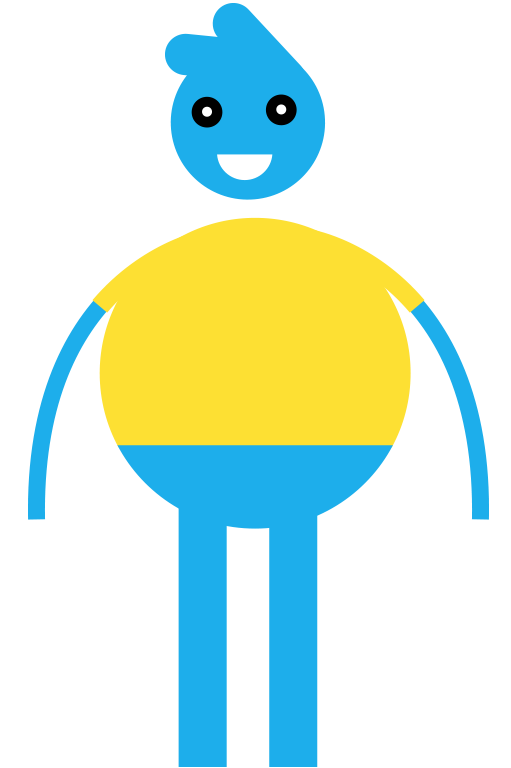




Why should I care about concussions?
Which 3 things are most important to you as your child is playing their sport?
Having a concussion affects reaction time and ability to focus, and staying in the game may hurt the team.
Kids who keep playing with concussive symptoms are out for longer.
If your child keeps playing after getting a concussion, they can get a more severe injury.
Concussions make it hard to focus in school.
Youth with multiple concussions take longer to get better, and may have long term problems with thinking or memory.







What is a concussion?
A concussion is a brain injury. It happens when an athlete crashes into another person or the ground or is hit by the ball or puck.





How do concussions happen?
Getting hit in the head or body can make the brain move inside the skull. This creates changes in the brain and causes symptoms. You can’t see this kind of damage on an MRI or CT scan.





When do you see
symptoms?
symptoms?
Sometimes symptoms come on right away, but other times they can take a few minutes or hours.





What does a concussion look like from the sideline?
Click an item below.
- Holding head
- Stumbling or trouble getting up
- Throwing up
- Can’t remember the play
- Slow reaction time
- Crying for no reason
- Passing out (only 10% of all concussions)




What does a concussion look like a few hours later?
Click an item below.
- Complaining of headache
- Trouble walking straight
- Feeling dizzy
- Light hurting eyes, sound hurting ears
- Responding slowly
- Trouble focusing, feeling in a “fog”
- Irritable or emotional
- Unable to remember what happened
- Just not feeling “right”





How do concussions happen in sports?
Select a sport to find out more.
Baseball
- Fielding a batted ball - 47.4%
- Batting - 26.4%
- Unknown - 11.6%
- Other - 7.4%
- Throwing not pitching - 5.8%
Men's Basketball
- Defending - 26.0%
- Unknown - 25.2%
- Chasing loose ball - 12.8%
- General Play - 12.6%
- Rebounding - 10.3%
Women's Basketball
- Defending - 29.7%
- Rebounding - 20.4%
- Unknown - 15.6%
- General Play - 14.5%
- Chasing loose ball - 14.4%
Cheerleading
- Toss - 36.7%
- Partner stunt - 32.7%
- Pyramid - 22.4%
- Standing tumbling - 4.1%
Football
- Being tackled - 31.4%
- Tackling - 22.6%
- Blocking - 15.5%
- Being blocked - 14.1%
- Unknown - 13.7%
Gymnastics
- Surface contact during floor routine - 33.3%
- Surface contact during uneven bars - 25.0%
- Contact with balance beam - 16.7%
Men's Ice Hockey
- Player contact while checking - 23.7%
- Player contact during general play - 22.8%
- Player contact while handling puck - 8.9%
Women's Ice Hockey
- Player contact during general play - 24.7%
- Surface contact during general play - 10.6%
- Player contact while defending - 8.2%
Women's Field Hockey
- Player contact while handling ball - 13.3%
- Player contact while running - 13.3%
- Stick contact during general play - 13.3%
Men's Lacrosse
- Player contact during general play - 17.7%
- Player contact while chasing loose ball - 15.7%
Women's Lacrosse
- Player contact while defending - 10.9%
- Stick contact while defending - 10.9%
Rugby
- Head high tackles - 40%
- Head contact with the ground and head contact with opposing player’s body - 35%
Men's Soccer
- Heading ball - 27.3%
- Defending - 23.6%
- Goaltending - 17.1%
- Chasing loose ball - 8.1%
Women's Soccer
- Defending - 20.8%
- General Play - 20.0%
- Heading ball - 17.9%
- Unknown - 16.0%
Softball
- Fielding a batted ball - 17.6%
- Unknown - 15.7%
- Other - 15.7%
- Fielding a thrown ball - 14.1%
Volleyball
- Digging - 36.1%
- Serving - 15.7%
- Blocking - 10.9%
- General Play - 10.9%
Wrestling
- Player contact during takedown - 31.4%
- Player contact while sparring - 16.3%
- Surface contact during takedown - 15.1%
Other

